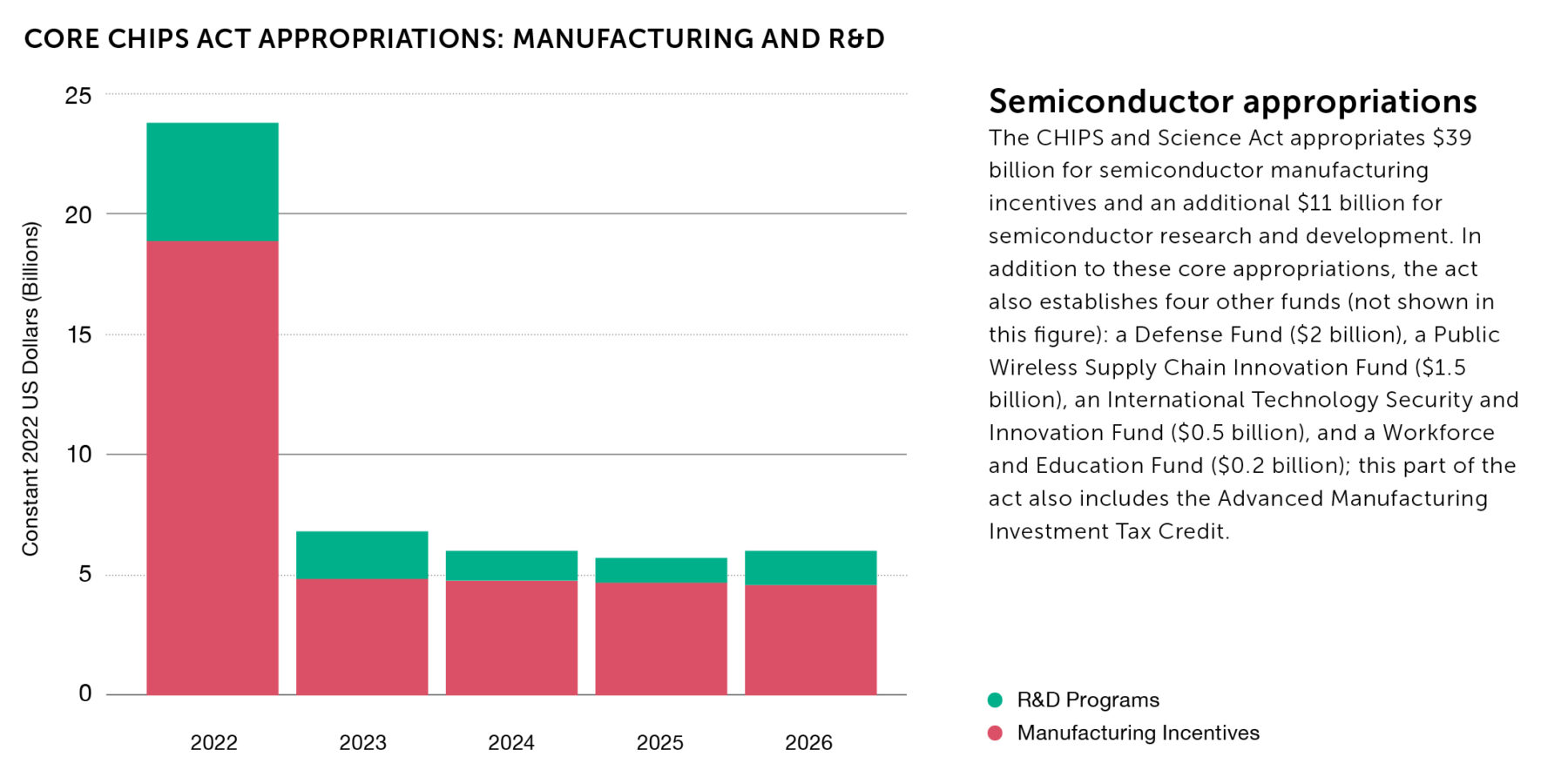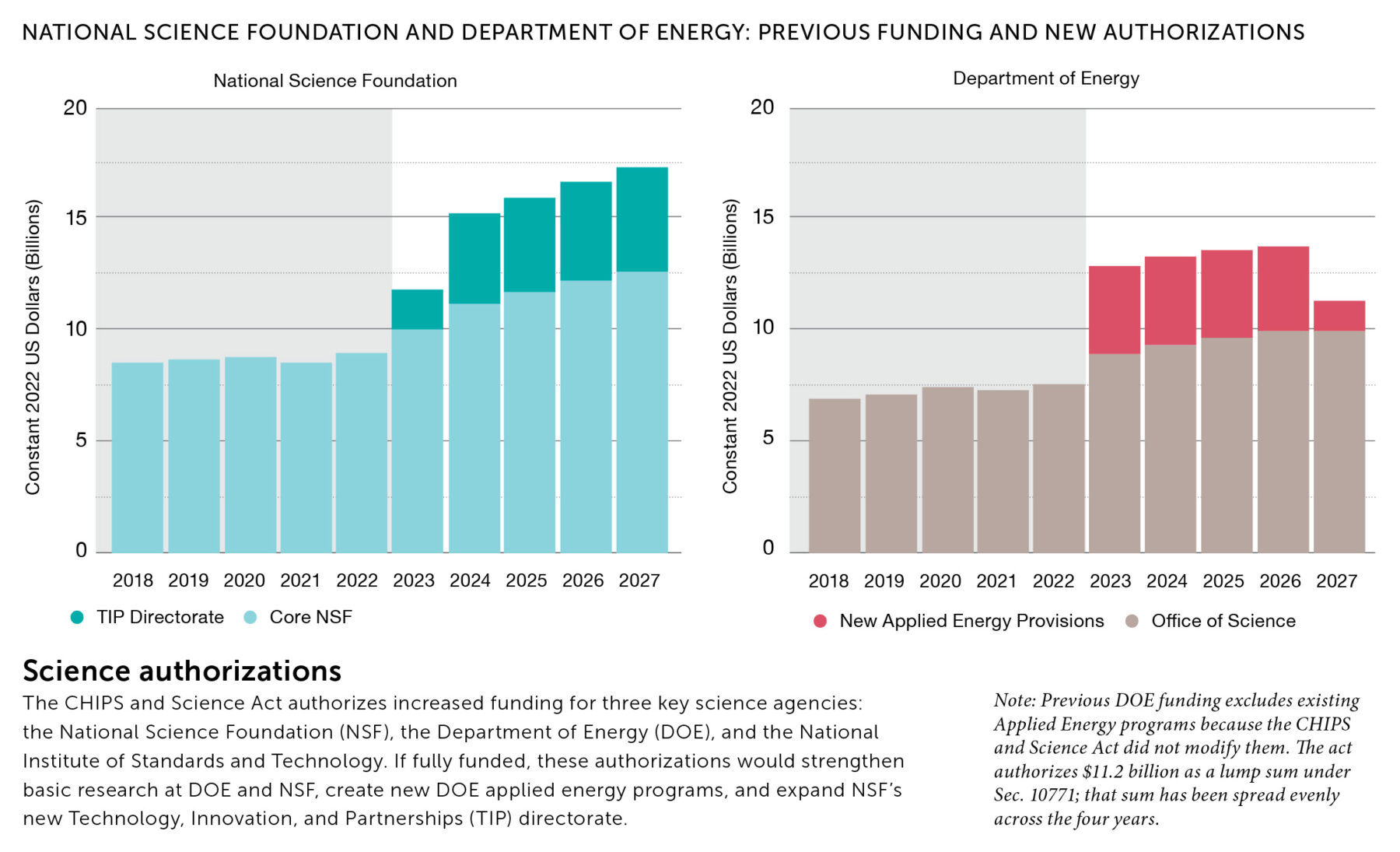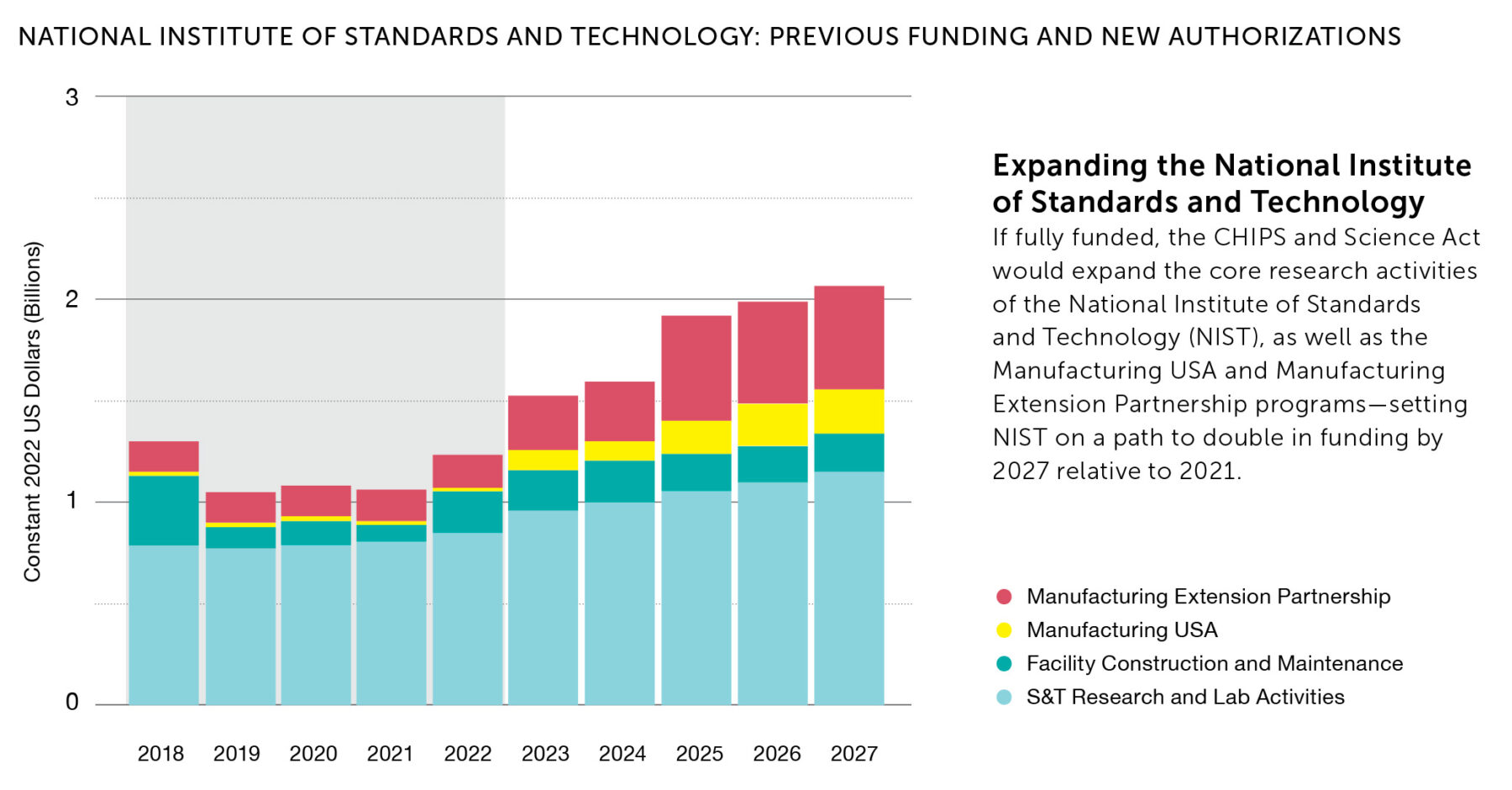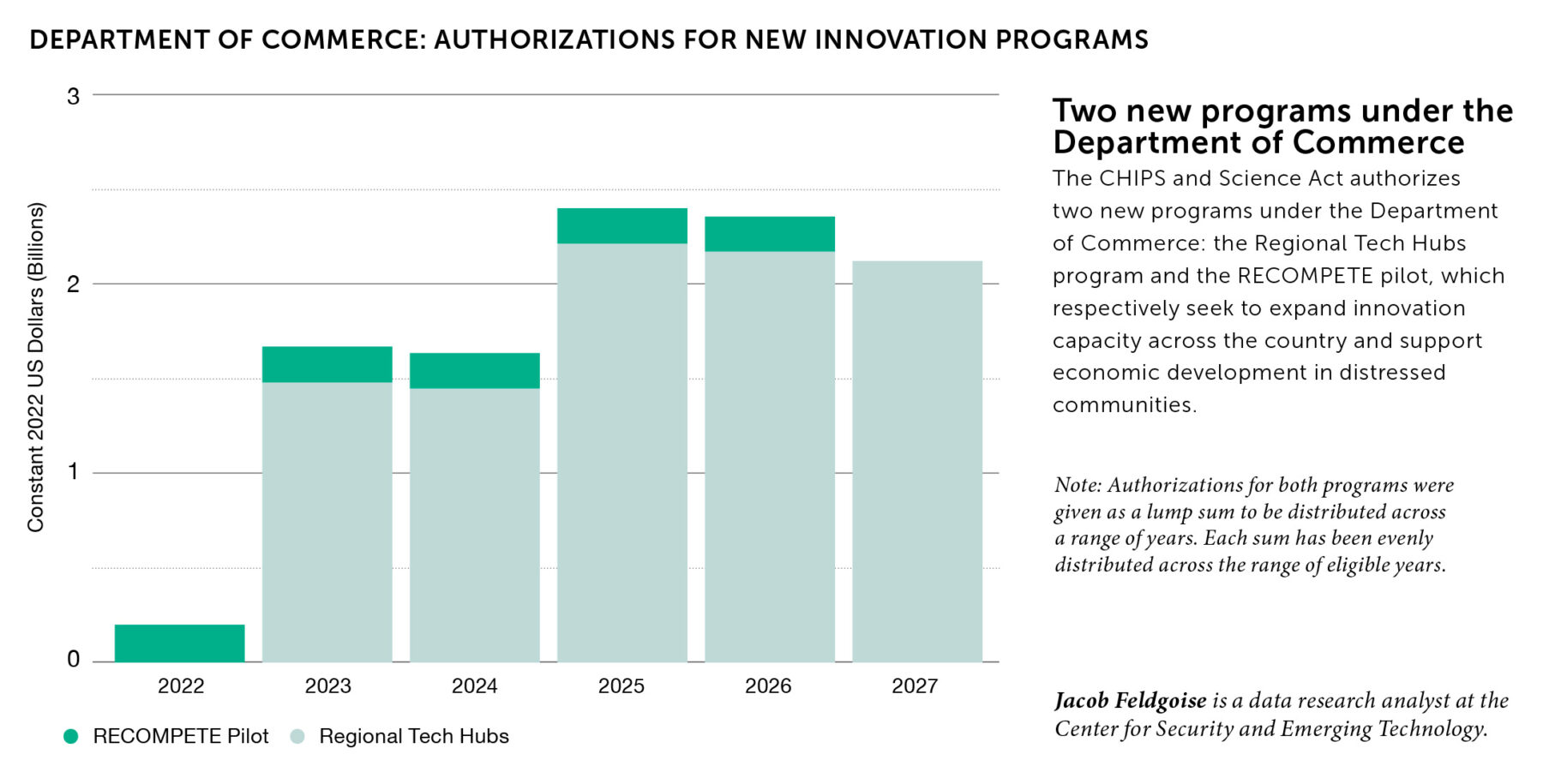Illustration by Shonagh Rae
How the CHIPS and Science Act Can Deliver on Its Promises
Perspectives from
Yu Zhou • Steven C. Currall and Venkatesh Narayanamurti • Elise Harrington, Sairaj Dhople, Xiaojia Wang, Jungwon Choi, and Steven Koester • Maryann Feldman • Sujai Shivakumar
Figures by
Jacob Feldgoise
Global Competition
Competing With China
Although the “threat” of China has been used to justify American governmental spending, when it comes to semiconductors, China has largely been a customer of American and Asian giants rather than a competitor.

Future technological competitiveness will require promoting synergistic alliances among industry, government, and academia—as well as making the boundaries among these institutions increasingly porous.
Linking Science and Technology
An Inflection Point for Technological Leadership?

Centering Sustainability
Sustainability for Semiconductors
Researching ways to repair and recycle chips and related components can result in designs that avoid dependence on foreign suppliers or scarce resources, increasing the security of domestic supply chains.

Although universities are necessary for technology-based economic development, it has become clear that research and education alone are not sufficient to create thriving innovation zones.
Regional Economic Growth
Place-Based Economic Development

A Long-Term National Commitment
Manufacturing and Workforce
As the CHIPS Act is implemented, it will be important to ensure that regional networks support broader national efforts to promote US leadership in semiconductors and microelectronics.
We welcome your comments on the ideas presented in this section. Please write us at [email protected] to submit a letter to the editors.
